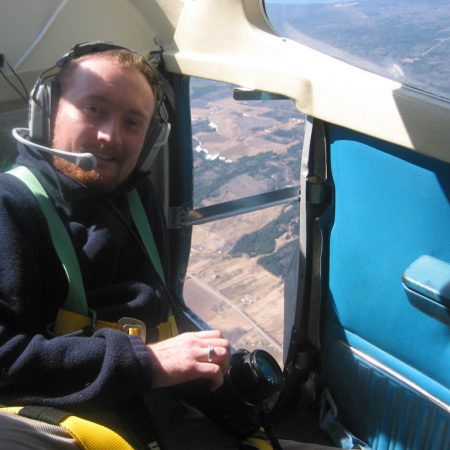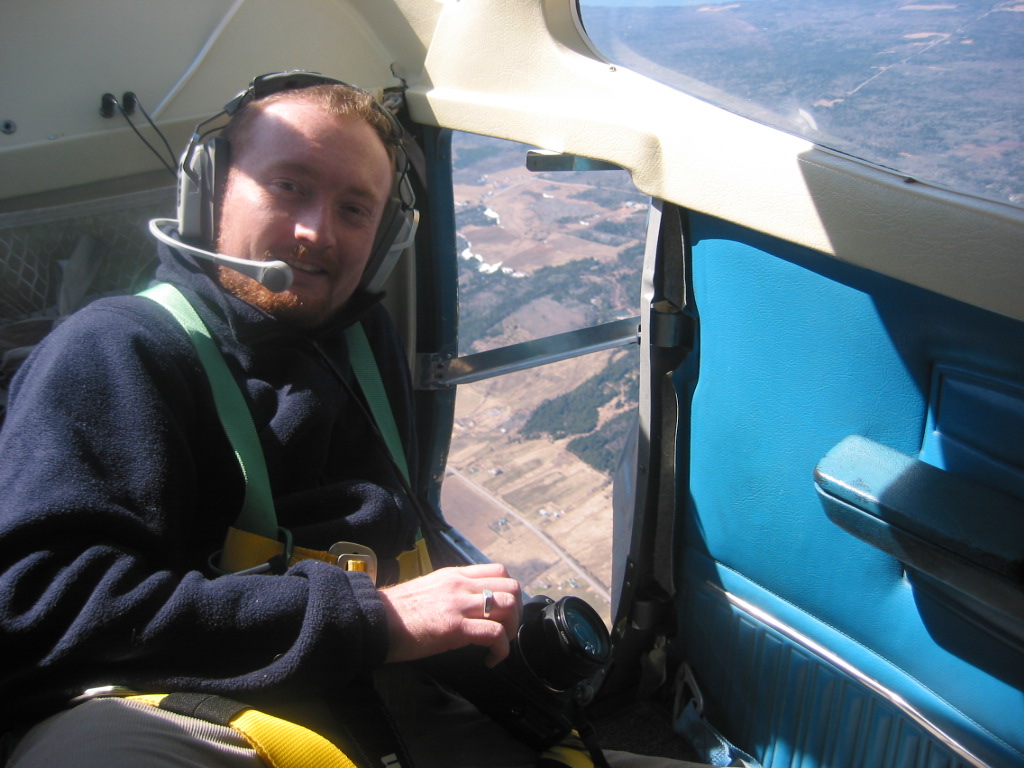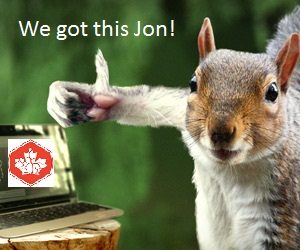NRCan, GeoConnections, CGDI, & the Canadian Geomatics Round Table
GoGeomatics Canada got in touch with Natural Resources Canada (NRCan) in order to ask them about all the most recent goings on over there on Booth Street in Ottawa. Michelle Viau, the Communications Advisor in the Media Relations Unit at Natural Resources Canada, was kind enough to answer our questions. This article runs a bit of a gauntlet of diverse topics in Canadian geomatics so bear with us.
The government of Canada renewed the program funding for GeoConnections in 2010 to the tune of 30 million dollars for another 5 years. So it’s important that we all pay attention to what they are doing as these funds are used to drive the CGDI and much of the government programs affecting geomatics in Canada. So without further fanfare lets get started and have a look at our questions and the answers.
GoGeomatics: To start off with lets go with some basic questions. Can you tell the community what is the CGDI and why is it important to Canadians?
NRCan: The Canadian Geospatial Data Infrastructure (CGDI) is an on-line resource that improves sharing, access and use of geospatial information. It helps decision makers from all levels of government, the private sector, NGOs and academia make better decisions on social, economic and environmental priorities.
The infrastructure itself consists of data, standards, policies, technologies and partnerships that are in place to allow the sharing and visualization of information on the Internet. Collaboration and partnerships between federal, provincial, territorial and regional governments, the private sector, and academia are key to ensuring interoperability to support the success of the CGDI.
It is important to note that CGDI is not any single database or website but an assortment of online geospatial resources. These resources operate within the same set of standards and policies to maximize data availability and use.
GoGeomatics: How did the program get started? How long has it been running? What are some of the major projects to have been funded that Canadians have benefited from?
NRCan: The GeoConnections program started in 1999. At that time NRCan recognized the power of geospatial information to support decision-making and drive innovation and productivity. NRCan also recognized that making geospatial data available via the Internet was the way of the future. Our hunch has obviously been confirmed by tech giants – think Google Maps, Microsoft Bing Maps and more recently Apple Maps.
The first phase of GeoConnections (1999-2005) succeeded in building the data “supply” side of the CGDI. Outputs included a national database of key framework data layers built to nationally-agreed upon standards and specifications. Key framework layers included the National Road Network, Digital Elevation Data and Administrative Boundaries. Standards and policies for the improved integration and use of geospatial data were established, and best practices for a wide range of licensing options were defined. Software tools and applications such as the GeoConnections Discovery Portal were also developed so people could discover, access, analyze and disseminate geographic data via the Internet in a wide variety of ways.
GeoConnections second mandate (2005-2010) focused on developing the ”demand” side of the CGDI by supporting projects to build capacity in user communities to access and use the CGDI to enhance decision-making in four areas: public health, public safety and security, environment and sustainable development, and in matters of importance to Aboriginal communities. GeoConnections 2 allowed us to better-understand the need of CGDI users, further develop user ability to leverage the infrastructure, and continue building the CGDI in the area of standards, policies, data and partnerships. Outputs included 96 datasets incorporated into the CGDI, 257 projects funded across the thematic areas, and 128 new portals and systems linked to the CGDI.
We’re now in phase 3 of GeoConnections, working to ensure the CGDI is sustainable by making sure the infrastructure is comprehensive, usable, high-performing, relevant, and poised for future growth and development. Our work now focuses on strategic and operational policies, standards and outreach.
GoGeomatics: At the 2012 Global Geospatial conference in Quebec City, the minister of Natural Resources Joe Oliver gave a speech where he said Canada is a recognized leader in providing open-source information. Was he referring to some of the geospatial data and the tools like GeoBase and GeoGratis? How is GeoConnections involved in those two websites?
NRCan: Indeed, Minister Oliver indicated that Canada is a leader in Open Data, such as those datasets available through GeoConnections-supported portals. The Minister also referred to GeoConnections as a great Canadian success story.
Open Data is a key component of Canada’s Open Government Strategy. The aim of the Strategy’s Open Data initiative is to increase the availability of information to citizens, create socio-economic opportunities, and enable citizens to participate more fully in the process of government. Open Data drives economic growth, fosters innovation, job creation and improved community services for Canadians, and helps create new business or research opportunities.
NRCan has been a leader in the release of open geospatial information. Downloads have grown past 11 million per year and geospatial data now makes up roughly 90 percent of the Government of Canada’s open data available at www.data.gc.ca. Our geospatial data is also freely available in useful formats in via GeoBase and GeoGratis, for reuse by governments, citizens, voluntary organizations, and the private sector.
GeoConnections was significantly involved in establishing GeoBase under its first mandate, and during its second phase, GeoConnections contributed to the on-going maintenance of the open geospatial GeoBase layers and provided support for the development of new layers. Also during the first phase of GeoConnections, we provided support to organizations to make geospatial data contributions to GeoGratis. Our colleagues within NRCan’s Mapping Information Branch now manage the GeoGratis site on an on-going basis.
GeoConnections continues to provide leadership and coordination to develop open geospatial data standards and data layers, along with the operational policies, systems, and technologies that comprise the CGDI. For example, GeoConnections works to support the Federal Committee on Geomatics and Earth Observations (FCGEO) which has a mandate to provide proactive, whole-of-government leadership in geomatics and Earth observations to better support government priorities, and to enhance the responsiveness, efficiency and sustainability of the federal geomatics and Earth observations infrastructure. These efforts will ensure that federal geospatial data are collected and managed once, used many times, are interoperable with other forms of economic and social data, and perhaps most importantly, made available openly to the public.
GoGeomatics: Both GeoBase and GeoGratis are geospatial data access portals. What is the difference between them? Why not have one site that allows access to all the data from one portal? Would that not be cheaper to fund and support?
NRCan: NRCan’s Mapping Information Branch provides leadership for GeoBase (www.GeoBase.ca), a federal-provincial-territorial government initiative overseen by the Canadian Council on Geomatics that ensures the provision of, and access to, a common up-to-date and maintained base of quality geospatial framework data covering the entire Canadian landmass. Your readers are likely aware the GeoBase thematic layers now include Administrative Boundaries, the Canadian Geodetic Network, Canadian Geographical Names, Elevation Data, Land Cover, National Hydro Network, National Power Line Network, National Railway Network, National Road Network, and a Satellite Imagery layer.
The new GeoGratis website was recently re-launched by NRCan (http://geogratis.gc.ca/beta/) and provides a standards-compliant, single point of access to a broad collection of NRCan geospatial data, maps, images and scientific publications. This data portal is easy to use and allows users to search, view and download data or documents at no fee.
You may be interested to know that FCGEO has launched the Federal Geospatial Platform initiative which is a collaborative effort across 21 departments and agencies to fundamentally change the way we share, use and manage geospatial assets to support effective program delivery. The Federal Geospatial Platform will be a collaborative Internet-based environment consisting of authoritative geospatial data, services, and applications that will enable the government’s most relevant information to be managed spatially, analyzed, and displayed in a visual context to enhance decision-making support on government priorities. The platform will also provide accessible and reusable geospatial information and visualization services publically to foster innovation and ensure better service for Canadians.
GoGeomatics: Recently NRCan held a public consultation with stakeholders in the Canadian geomatics community. This has been referred to on Twitter as the Canadian Geomatics Round Table. The intent of these consultations is to come up with a Pan-Canadian geomatics strategy. These meetings have been with traditional and non-traditional Canadian geomatics stakeholders. Which individual and groups attended these consultations?
NRCan: NRCan convened a meeting of the Canadian Geomatics Community Round Table to stimulate open dialogue amongst stakeholders. The Round Table is a forum for focussed multi-stakeholder engagement and collaboration for the broader geomatics community. The participants at the recent January 2013 meeting in Ottawa were representative of organizations spanning the Canadian geomatics sector, including nine private sector companies, six provincial and territorial governments, four universities, three professional organizations and NGOs, and the Government of Canada.
Your readers may be interested to learn of a team within GeoConnections, the Canadian GeoSecretariat, who are very active in providing coordination and support to the Canadian geomatics community. The GeoSecretariat supports the Canadian Geomatics Round Table, as well as the Federal Committee on Geomatics and Earth Observations, the Geographical Names Board of Canada, and the Canadian Committee on Geomatics. The GeoSecretariat’s role is to bring together and foster collaboration within and between these groups, aligning initiatives and capitalizing on opportunities for synergy where possible.
GoGeomatics: GoGeomatics understands that it is important to have a strategy. What are the goals that this strategy will achieve?
NRCan: The Canadian Geomatics Community Round Table is undertaking collaborative development of a Pan-Canadian Geomatics Strategy. The Strategy will provide a vision for the Canadian geomatics sector as well as common goals and objectives that can be achieved collaboratively by the community. Ultimately, the key objectives of the Strategy are to increase understanding of the use and value of geomatics and the geomatics sector to Canadians, and to ensure Canada has a healthy geomatics sector that is productive, competitive and sustainable well into the future. The scope of the Strategy is broad, covering sector identity, leadership, governance, markets, business model, HR capacity and legal and policy framework.
The recently-announced GeoConnections-sponsored Canadian Geomatics Environmental Scan and Economic Study project (http://geoconnections.nrcan.gc.ca/8) will have significant bearing on the Strategy.
GoGeomatics: Can you tell the community in brief, what was the old strategy?
NRCan: In the past our approach was similar: we sought and received advice from various players in the Canadian geomatics community. Through the evolution of the Canadian Geomatics Round Table over a number of years, we have a commitment to collaborate on achieving a common view of the future, and are now able to develop a community strategy and action plan. The Pan-Canadian Geomatics Strategy will be an important step for the Canadian geomatics community.
GoGeomatics: There does not seem to be any social media tools on the GeoConnections, GeoBase, and GeoGratis websites. Is this a communications channel GeoConnections is thinking of using in the future? The Canadian Red Cross has reported that 64 percent of Canadians used social media in 2012. Of those, 62 percent participated nearly every day. Is this an opportunity for NRCan? One day, could we see users being able to tweet about the latest news and information on the GeoConnections website?
NRCan: The geomatics community is already using social media to discuss NRCan’s open data, geospatial portals and programs! We hope this continues with exposure though discussions on sites like GoGeomatics. GeoConnections is working with our colleagues in NRCan’s corporate communications group to use the existing departmental Twitter account @NRCan (and @RNCan en français).
GoGeomatics: Will we be seeing any GeoConnections staff at the Ottawa GoGeomatics socials? There are many young Canadian geomatics users who would love to meet and discuss geomatics with GeoConnections and NRCan staff.
NRCan: This is an excellent idea, especially for our highly talented geomatics engineers to share our expertise with the local community. Please keep us informed.
GoGeomatics: The next social is on Wednesday April 24 at 6pm at the Fox and Feather at 283 Elgin Street, in the upstairs bar. See you there!








Did anyone else notice they dodged the questions about why there are two federal geomatics data portals, GeoGratis and a Geobase and not just one? They just kind of go on and on but never say why they have a redundancy. If they wanted to save some money they would just have one.
Yes I noticed the dodgy answer too. Al they did was describe the two websites. They did nor justify the need for two websites
This is one of the best explanations I’ve seen as to what NRCAN and GeoConnections are actually doing in GIS. Good way to start…what is the CGDI?